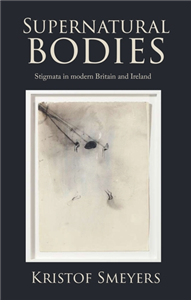Description
More Information
Rights Information
Albania, Algeria, Angola, Argentina, Armenia, Australia, Austria, Bahrain, Belgium, Belize, Benin, Bolivia, Bosnia and Herzegovina, Botswana, Brazil, Bulgaria, Burkina Faso, Burundi, Cameroon, Canada, Cape Verde, Central African Republic, Chad, Chile, China, Colombia, Comoros, Congo [DRC], Congo, Republic of the, Costa Rica, Ivory Coast, Croatia, Czech Republic, Denmark, Djibouti, Ecuador, Egypt, El Salvador, Equatorial Guinea, Eritrea, Estonia, Ethiopia, Faroe Islands, Finland, France, French Guiana, Gabon, Gambia, Georgia, Germany, Ghana, Greece, Guatemala, Guinea, Guinea-Bissau, Guyana, Honduras, Hongkong, Hungary, Iceland, India, Indonesia, Iran, Iraq, Ireland, Israel, Italy, Japan, Jordan, Kazakhstan, Kenya, Kuwait, Latvia, Lebanon, Lesotho, Liberia, Libya, Lithuania, Luxembourg, Macau, China, Macedonia [FYROM], Madagascar, Malawi, Malaysia, Mali, Malta, Mauritania, Mauritius, Mayotte, Mexico, Mongolia, Montenegro, Morocco, Mozambique, Namibia, Netherlands, New Zealand, Nicaragua, Niger, Nigeria, Norway, Oman, Pakistan, Panama, Paraguay, Peru, Philippines, Poland, Portugal, Puerto Rico, Qatar, Reunion, Romania, Russia, Rwanda, Saint Helena, Sao Tome and Principe, Saudi Arabia, Senegal, Serbia, Seychelles, Sierra Leone, Singapore, Slovakia, Slovenia, Somalia, South Africa, South Korea, Spain, Sri Lanka, Sudan, Suriname, Swaziland, Sweden, Switzerland, Syria, Taiwan, Tanzania, Thailand, Timor-Leste, Togo, Tokelau, Tunisia, Turkey, Uganda, Ukraine, United Arab Emirates, United Kingdom, United States, Uruguay, Venezuela, Vietnam, Western Sahara, Yemen, Zambia, Zimbabwe, South Sudan, Cyprus, Palestine, Bangladesh, Cambodia, Liechtenstein, Azerbaijan, Jamaica, Kyrgyzstan, Dominican Republic, Myanmar, Monaco
Endorsements
Experiencing extraordinary religious phenomena on one's body, from ecstasy to bearing the Wounds of Christ, has often been described as an intimate, innermost bond with the divine. But supernatural bodies were not private affairs. They affected families, communities, as well as a burgeoning public opinion. This book offers the first account of such bodies in the public sphere in modern Britain and Ireland. Supernatural bodies were manipulated into parables and symbols, and became hotly contested in an outpouring of polemical print. The book argues it is precisely their physicality that sets them apart from many other extraordinary phenomena that were also prolific in this period. Building on the observation that supernatural bodies occupied a potent if marginal space in a wide range of public discussions, the book revisits some of the most pivotal cultural moments and developments of the period: resurging anti-Catholicism and Protestant evangelicalism, the idea of 'rational' national and confessional identities, as well as the contested interest of natural and other - mental, psychical, occult - sciences in the supernatural. In doing so, Supernatural bodies also provides new insights into how the public sphere changed in this period, and into the production of new ideas about topics such as bodily autonomy, gendered religion, the nature of evidence, and the limits of what could be known. Presenting many telling cases of stigmata, Supernatural bodies shows how publicly debated topics of religion and science, belief and doubt, (dis)enchantment and modernity met around supernatural bodies in modern Britain and Ireland.
Reviews
Experiencing extraordinary religious phenomena on one's body, from ecstasy to bearing the Wounds of Christ, has often been described as an intimate, innermost bond with the divine. But supernatural bodies were not private affairs. They affected families, communities, as well as a burgeoning public opinion. This book offers the first account of such bodies in the public sphere in modern Britain and Ireland. Supernatural bodies were manipulated into parables and symbols, and became hotly contested in an outpouring of polemical print. The book argues it is precisely their physicality that sets them apart from many other extraordinary phenomena that were also prolific in this period. Building on the observation that supernatural bodies occupied a potent if marginal space in a wide range of public discussions, the book revisits some of the most pivotal cultural moments and developments of the period: resurging anti-Catholicism and Protestant evangelicalism, the idea of 'rational' national and confessional identities, as well as the contested interest of natural and other - mental, psychical, occult - sciences in the supernatural. In doing so, Supernatural bodies also provides new insights into how the public sphere changed in this period, and into the production of new ideas about topics such as bodily autonomy, gendered religion, the nature of evidence, and the limits of what could be known. Presenting many telling cases of stigmata, Supernatural bodies shows how publicly debated topics of religion and science, belief and doubt, (dis)enchantment and modernity met around supernatural bodies in modern Britain and Ireland.
Author Biography
Kristof Smeyers is a Research Fellow at the University of Louvain
Manchester University Press
Manchester University Press is a leading UK publisher known for excellent research in the humanities and social sciences.
View all titlesBibliographic Information
- Publisher Manchester University Press
- Publication Date September 2024
- Orginal LanguageEnglish
- ISBN/Identifier 9781526177230 / 1526177234
- Publication Country or regionUnited Kingdom
- FormatPrint PDF
- Pages248
- ReadershipGeneral/trade
- Publish StatusPublished
- Dimensions216 X 138 mm
- Biblio NotesDerived from Proprietary 5989
- Reference Code15969
Manchester University Press has chosen to review this offer before it proceeds.
You will receive an email update that will bring you back to complete the process.
You can also check the status in the My Offers area

Please wait while the payment is being prepared.
Do not close this window.



